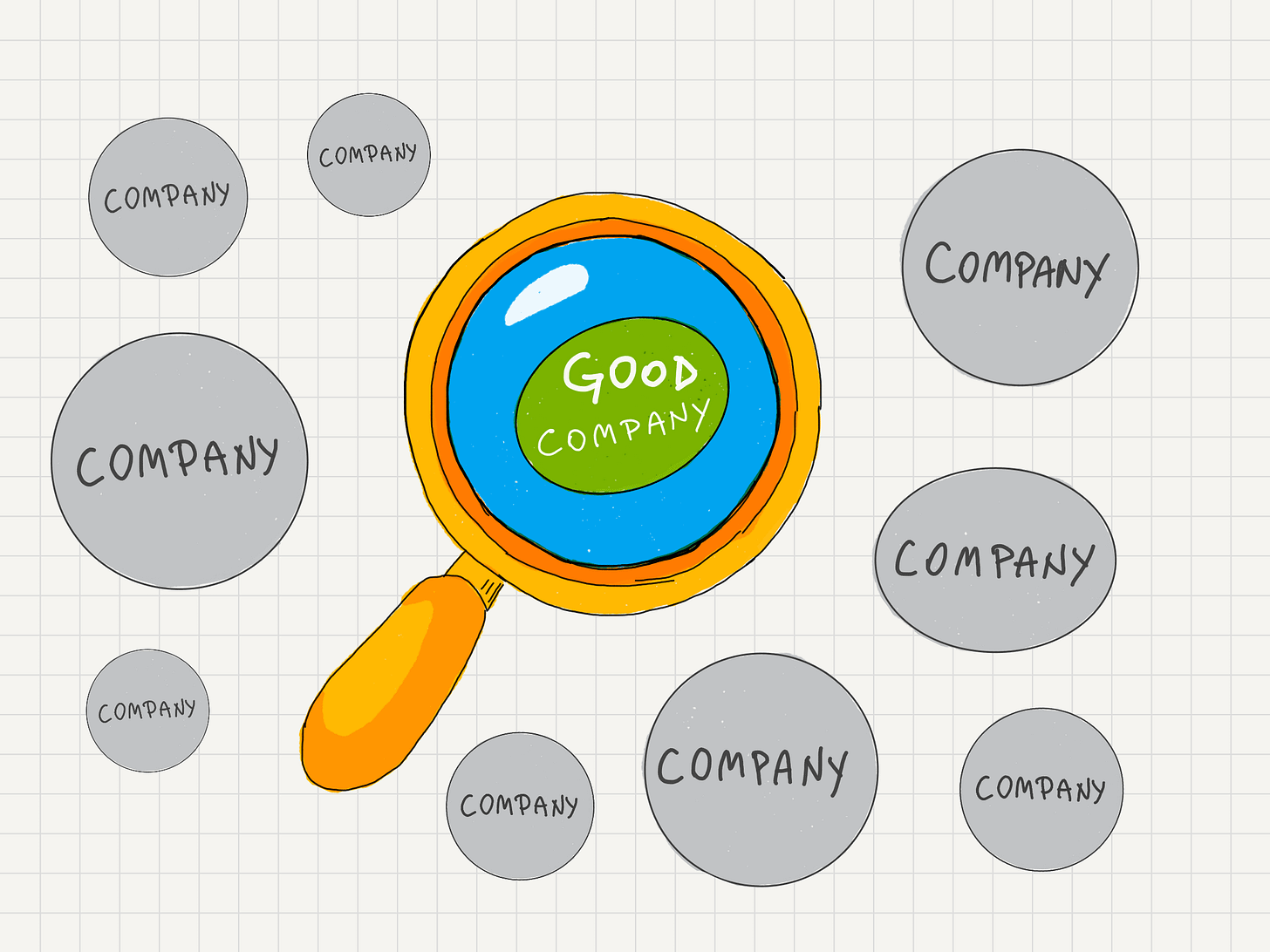Step 1: How to Find a Good Company (The Value Investor’s Way)
What to look for before you ever check the stock price
Hello!
We’re a newsletter dedicated to value investing.
Our driving principle is simple: buy great stocks at attractive prices.
Our methodology comes down to two key steps:
Find a Good Company
Assess whether it’s selling at a Good Price
When we analyze a company, we always start by asking: Is this a good business? If the answer is yes, we move on to the price. If not, we pass — no matter how cheap the stock looks.
In this post, we’ll focus on Step 1: How to find a good company — the foundation of every great investment.
Step 1: How to Find a Good Company
In order to determine if a company is truly good, we apply a specific set of criteria. We’re looking to answer questions like:
Is the company profitable and growing?
Does it have high margins?
How effective is management at allocating capital?
Does it have a healthy balance sheet?
Does it require a lot of capital to operate?
Does it generate enough cash to fund its operations, growth, and shareholder returns?
By evaluating these factors, we can assess whether the company has a sustainable competitive advantage — a moat that protects it from competitors.
Here are the Key Ratios we look at to help make that judgment:
Gross Margin > 40%
Shows how much profit the company keeps from each dollar of sales after covering direct production costs — higher means better efficiency.Net Profit Margin > 15%
Indicates how much net income is generated from each dollar of revenue — a sign of strong overall profitability.Revenue growing?
Reveals whether the company is increasing its sales over time — a key signal of business momentum.Net Income growing?
Measures whether profits are increasing year over year — a sign of financial health and scalability.Return on Equity (ROE) > 15%
Tells us how efficiently the company is generating profits from shareholders’ equity.Return on Invested Capital (ROIC) > 10%
Assesses how well the company is using all its capital (debt + equity) to generate returns — higher means better capital allocation.Debt/Equity < 1.0
Compares a company’s debt to its equity — lower values suggest less reliance on borrowing.Interest Coverage > 10
Shows how easily the company can pay interest on its debt — the higher, the safer.Debt / Free Cash Flow < 4.00
Indicates how quickly the company could pay off its debt using its free cash flow — lower values show stronger financial flexibility.Current Ratio > 1.0
Measures the company’s ability to pay short-term obligations with short-term assets — over 1.0 means it can cover its bills.CapEx / Sales < 5.00%
Shows how much of the company’s revenue is spent on maintaining or growing physical assets — lower means a more capital-light business.Free Cash Flow / Net Income > 1.0
Indicates the quality of earnings — if free cash flow exceeds net income, profits are likely real and sustainable.Free Cash Flow / Revenue > 15%
Measures how efficiently the company converts sales into free cash — a high ratio suggests strong cash generation.
Conclusion
Finding a good company is the first and most important step in our value investing process. By focusing on business quality — not just the stock price — we give ourselves a much stronger foundation for long-term success. The ratios and questions we’ve shared help us filter out mediocre businesses and zero in on the ones truly worth owning.
"It’s far better to buy a wonderful company at a fair price than a fair company at a wonderful price." - Warren Buffett
In the next post, we’ll move on to Step 2: assessing whether a good company is selling at a good price. Because even a great business isn’t a great investment — unless the price is right.




